Last updated on July 14th, 2024 at 07:22 am
Welcome to my writeup on Italian kitchen décor. This guide is designed to serve as your compass, pointing you toward the essential elements that make up the heart and soul of an Italian-style kitchen. From the rustic textures of Tuscany, to the sleek sophistication of Milan, you’ll explore how to fuse Italy’s rich culinary tradition with its timeless aesthetic to create a space that’s at once functional and inviting.
Basics
Whether you’re starting from scratch or transforming an existing space with Italian charm, my insights will help you every step of the way to ensure your kitchen is not only a testament to Italian design but a personalized retreat that resonates with your unique taste and lifestyle.
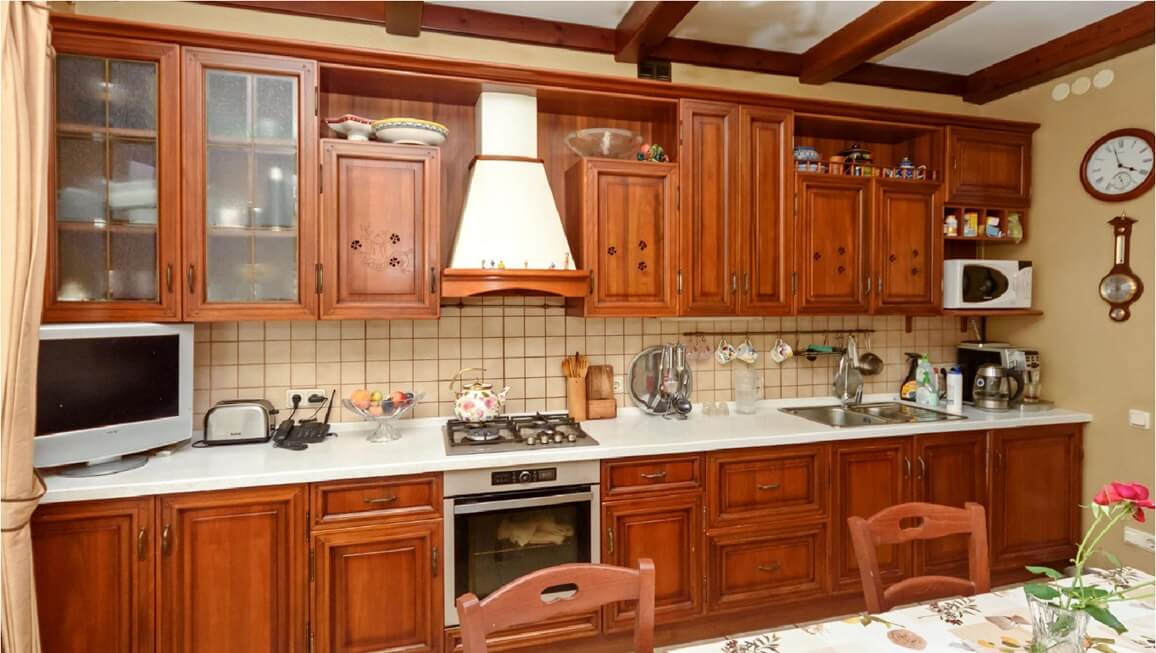
Interior designers often describe the Italian kitchen style as a blend of both old-world charm and modern practicality. It emphasizes natural materials like stone and wood, and often incorporates elements such as stucco walls, terracotta tiles, and heavy wooden beams. This style is defined by its use of warm, earthy tones paired with rustic, handcrafted details that evoke the essence of the Italian countryside.
The Italian kitchen design style has enjoyed a consistent appeal among homeowners, especially in the United States where it aligns with the broader trend of cozy, family-centered spaces. While design trends are inherently subject to change, the Italian kitchen style is all about using timeless elements that embrace culinary tradition and social gatherings. The classic appeal makes it more than just a limited trend in the world of interior design and it appeals to multiple age groups and lifestyles. So, it’s fairly safe to say that the Italian kitchen can be both a nod to traditional design and a long-term commitment to a style that is likely to stick around for many years to come.
Italian Kitchen VS Mediterranean Kitchen
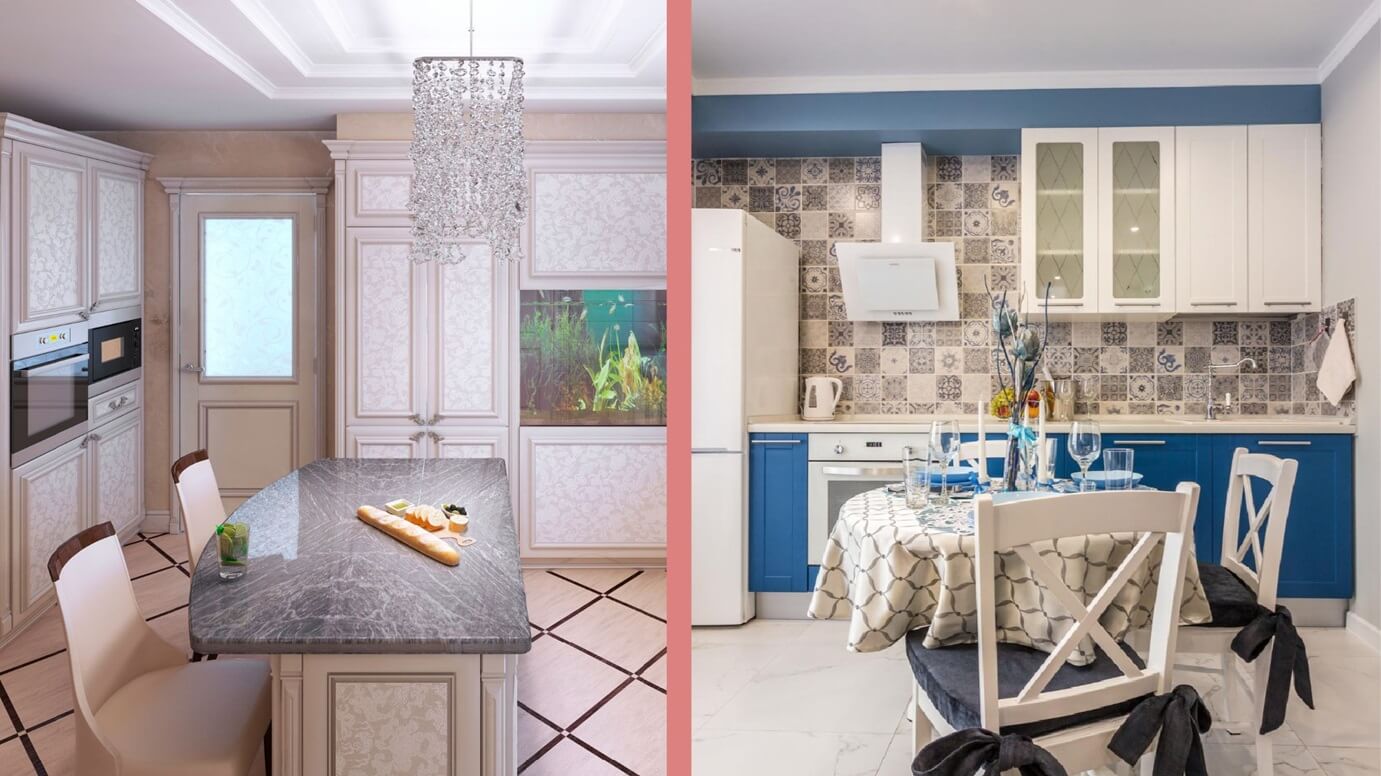
You may ask yourself, what makes the Italian kitchen design style different from some of its other regional decor styles, like the Mediterranean kitchen? Let’s take a look;
The Italian kitchen is characterized by a robust and rustic allure that reflects the hearty, homestyle which is Italian cooking. You can really sense a tradition and comfort vibe. Common elements like wrought iron, heavy wood, and stone invoke a traditional country aesthetic ambiance.
On the other hand, the Mediterranean kitchen is more soft and light. It tends to be a more varied aesthetic. While Italian and Mediterranean kitchens both draw from a palette of earthy tones and natural materials, they feature a distinct cultural voice through their design elements. For example, the Mediterranean kitchen, while sharing some elements like terracotta and stucco, the Mediterranean decor tends to be breezier. You’ll notice more coastal influences and a broader regional palette that spans multiple countries along the Mediterranean coast. You’ll see the use of lighter colored woods, usually featuring more tiled surfaces, and color schemes are inspired by the sea and sky, promoting a serene and tranquil ambiance. You’ll continue to see how this differs from the Italian kitchen as you read on.
Nonetheless, choosing between an Italian and a Mediterranean kitchen decor really comes down to personal taste and the type of warmth you’re looking for. Both are timeless in their own right, bridging culinary art with interior design.
Italian Kitchen VS Tuscan Kitchen Style
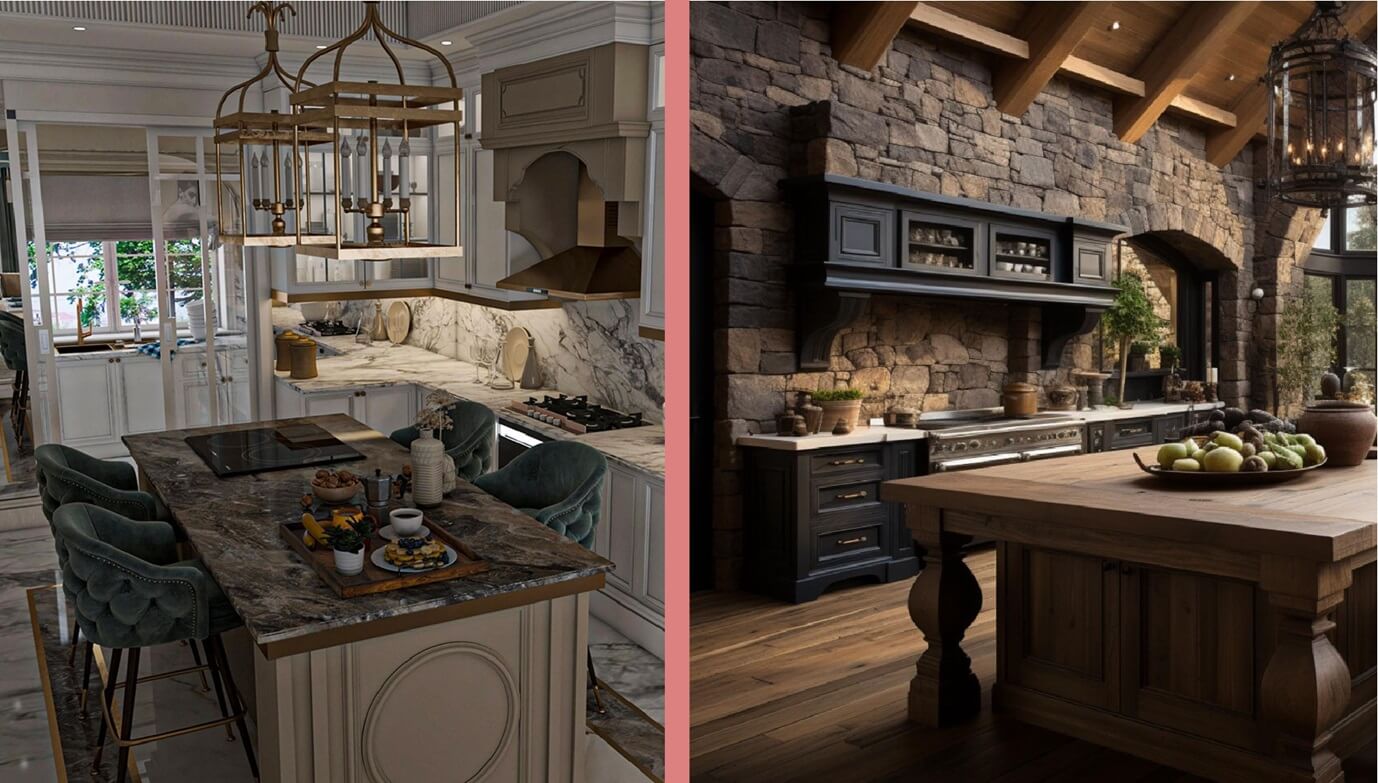
The difference, here, is similar to my above explanation where many of the differences between the Italian kitchen and Tuscan kitchen are based on regional influences from their respective geographical organs. For example, the Italian kitchen is about showcasing a broad representation of Italy’s culinary heritage, the Tuscan kitchen narrows the focus to the Tuscan region specifically. This means the Tuscan kitchen is more likely to be rustic and earthy — think of sunbathed rolling hills, sprawling vineyards, and farmhouses made of natural stone — you’ll find a heavier use of exposed wood, such as ceiling beams and reclaimed wood furnishings, paired with natural stone countertops and terracotta floor tiles. In conclusion, implementing the Tuscan kitchen design, you embrace the tranquil, rural spirit of Tuscany, whereas the broader parent style, the Italian kitchen décor style, allows for more urban or contemporary interpretations within the confines of Italian tradition.
Characteristics
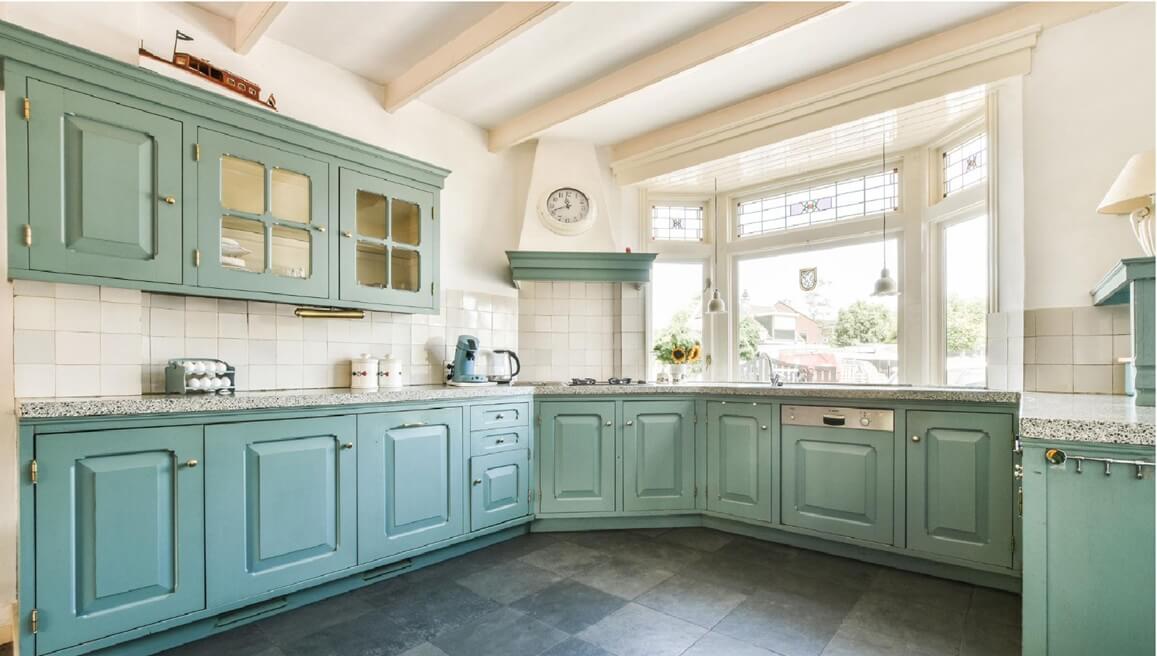
Materials and Textures
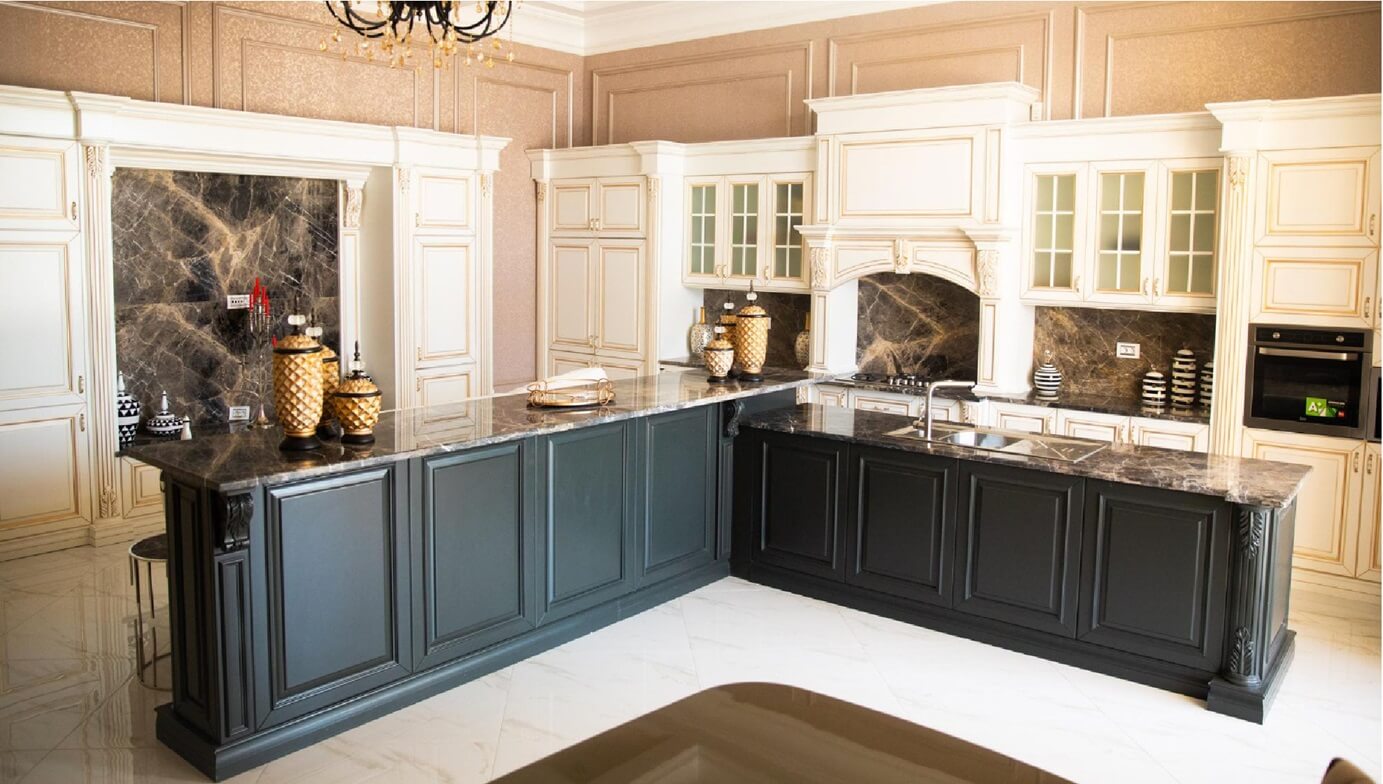
The Italian kitchen décor style is all about elegance and rustic charm. You’ll often find distressed wood, natural stone, and Carrara marble these are all common elements of the Italian kitchen. Think; “capturing the essence of a countryside retreat”, while also invoking a sense of luxury.
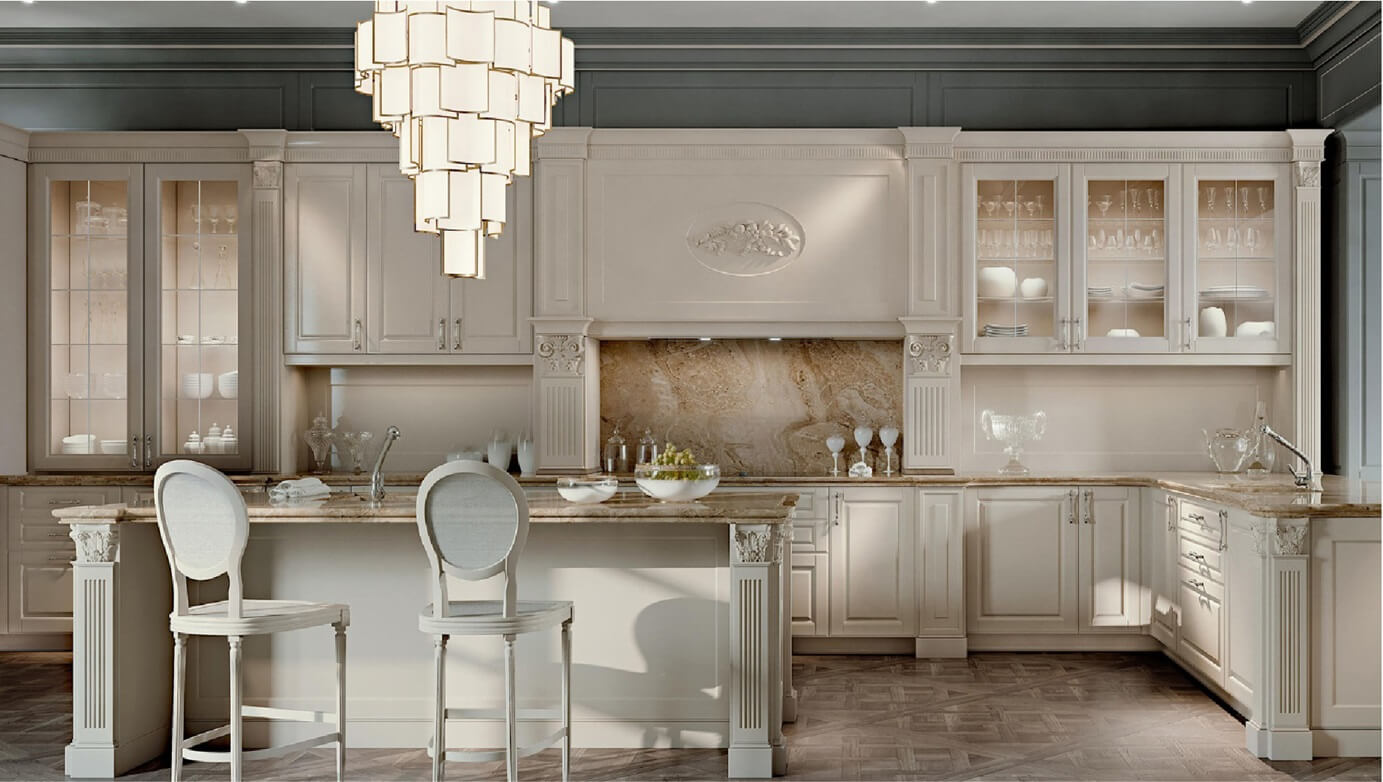
Blend Old and New
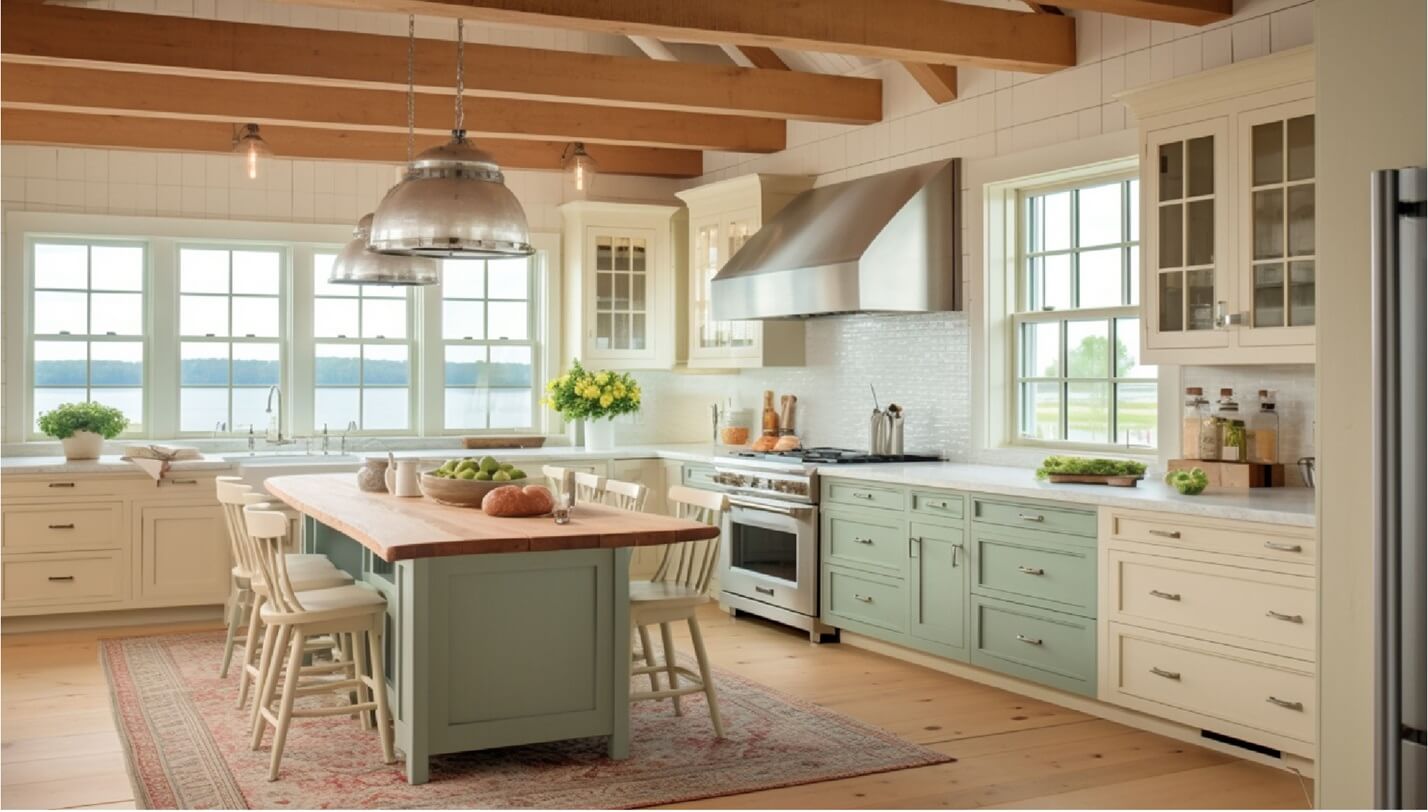
Shoot for a balance between old-world charm and modern functionality. Incorporate classic elements like a farmhouse sink or a traditional wood-burning oven alongside state-of-the-art appliances to create a kitchen that is as efficient as it is beautiful.
Color Scheme
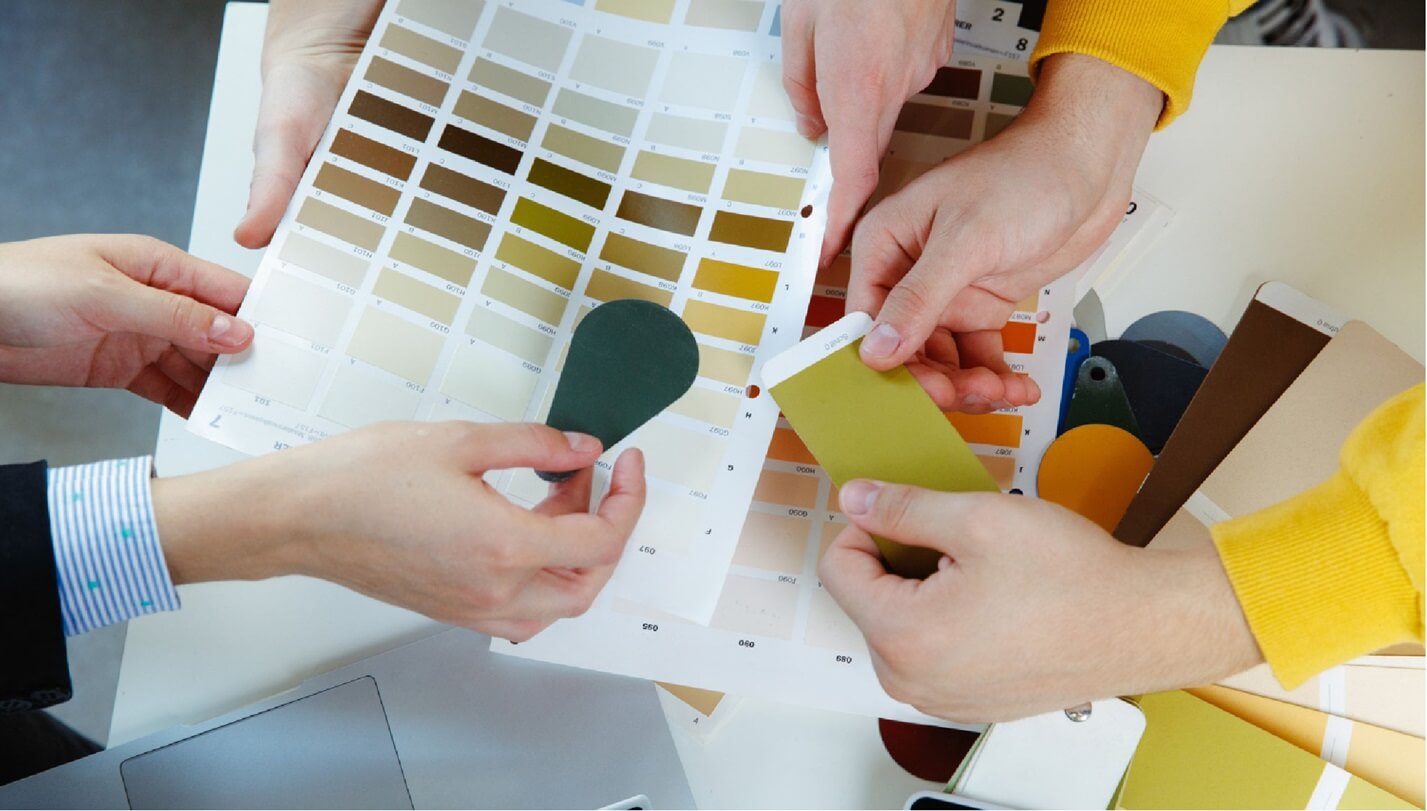
A well-considered color palette is pivotal in crafting the ambiance of an Italian kitchen.
The color scheme typically involves a symphony of warm, earthy hues that mirror the natural landscapes of Italy—a rich tapestry of the ochre of a Tuscan hillside, the deep greens of olive groves, and the burnt sienna of terracotta rooftops. These natural tones are tastefully complemented by creamy whites and deep wood stains, offering a backdrop that is both inviting and relaxing.
Accents colors might include the lush red of Chianti wine or the vibrant green of basil leaves, which not only pay homage to Italian cuisine but also add depth and vibrancy to the space. When planning the color scheme for an Italian kitchen, aim for balance and warmth, focus on colors that are inline with the overall rustic elegance of the design.
Cabinetry
 Italian kitchens often features unique cabinetry with rich, dark stains or antiqued paint finishes. Glass-front cabinets are also common, typically showing off Italian pottery or hand-painted ceramics while providing practical storage. Accenting small details like ironwork or carved cabinetry is common to give an artistic focal point—aim to find ways to pay homage to Italian craftsmanship.
Italian kitchens often features unique cabinetry with rich, dark stains or antiqued paint finishes. Glass-front cabinets are also common, typically showing off Italian pottery or hand-painted ceramics while providing practical storage. Accenting small details like ironwork or carved cabinetry is common to give an artistic focal point—aim to find ways to pay homage to Italian craftsmanship.
There are several distinctive types of cabinets that feature small artistic details that add to the kitchen’s Italian aura of rustic style. Here’s a few of these commonly featured types of cabinets;
- Traditional Paneled Cabinetry: This type of cabinet is often constructed from solid woods like cherry or maple and features raised panels with intricate moldings. Sometimes they feature scrollwork or corbels that speak classical Italian architecture.
- Shaker-Style Cabinetry: For a more understated look, the clean lines of Shaker-style cabinetry can still complement an Italian kitchen, especially when finished in darker stains or antiqued paint. This style focuses on simplicity and practicality but can be dressed up with unique hardware or decorative trim.
- Glass-Fronted Cabinetry: Glass door cabinets are perfect for displaying beautiful dishes, glassware, or treasured heirlooms. They typically come with options for different types of glass, like seeded or frosted, to add texture and interest to the cabinetry design.
- Open Shelving: This approach aligns with the Italian preference for a warm, hospitable environment. Open shelves often display everyday items for ease of access or showcase decorative pieces that reflect the homeowner’s personality.
- Distressed or Antiqued Cabinets: To achieve an aura of timeworn charm, many Italian kitchens feature cabinets that have been deliberately aged or distressed. This technique can lend a storied character to the space, as though it has been lovingly used for generations. Check out my DIY guide on how you can transform your current cabinetry into something that would show well in an Italian style kitchen (or bathroom for that matter).
“Italian kitchen cabinetry should always represent a perfect marriage of form and function, mirroring the homely yet stylish spirit of Italy itself”
Each type of cabinetry not only serves a functional purpose but also plays a role in defining the kitchen’s personality. Whether intricately detailed for a more high-dollar look or simple and rustic for casual elegance, Italian kitchen cabinetry should always represent a perfect marriage of form and function, mirroring the homely yet stylish spirit of Italy itself.
Surfaces
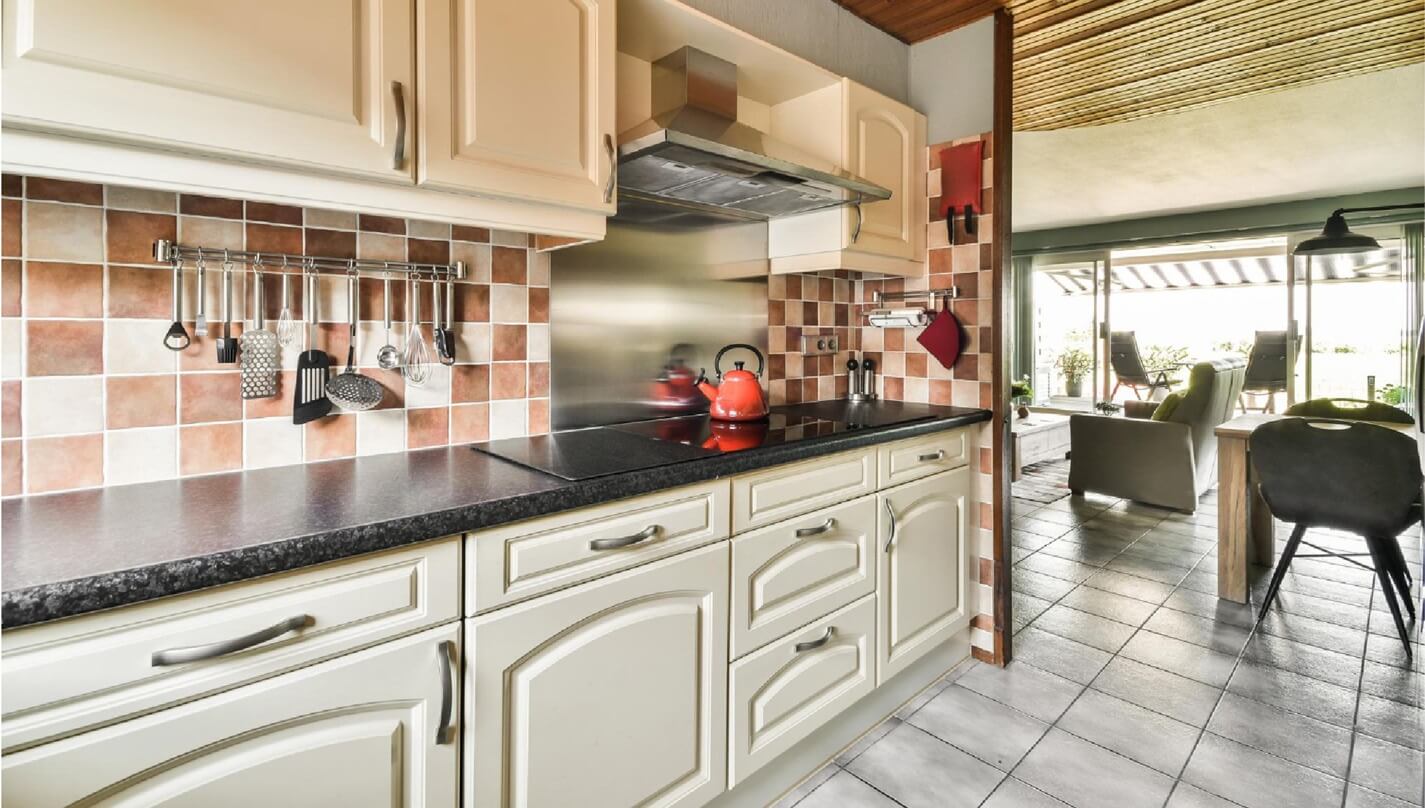
In addition to cabinetry, the beauty of an Italian kitchen is further embodied though the careful selection of countertops, flooring, and backsplash.
Flooring is commonly terracotta tiles, aged wood, or natural stone. These materials add durability and an old-world charm. It’s not just about the aesthetics, but how you feel as your feet comes into contact with these surfaces—it gives a sense of tactile warmth, grounding the space in authenticity. See more about various types of flooring for your kitchen here.
Countertops are often over-the-top, like luxurious polished granite, in contrast through, you can opt for simple and quiet elegance of marble sourced from the abundant quarries of Italy—especially the famous Carrara. These surfaces are not only visually stunning but are also versatile and resilient to the wear and tear of daily kitchen activities. Check out a little more about countertops and your kitchen here.
Backsplashes are a canvas for creativity within the Italian kitchen décor style. Hand-painted ceramic tiles with intricate patterns can create a artistic focal point, while simple, textured stucco can complement the rustic atmosphere. Subway tiles applied in a herringbone pattern can lend a more contemporary edge while maintaining the traditional Mediterranean feel. This is your blank canvas to play with — the options are limitless — but be sure you don’t go overboard in customizing your kitchen where you find yourself with a kitchen that’s so eclectic you have trouble if you sell.
Furniture
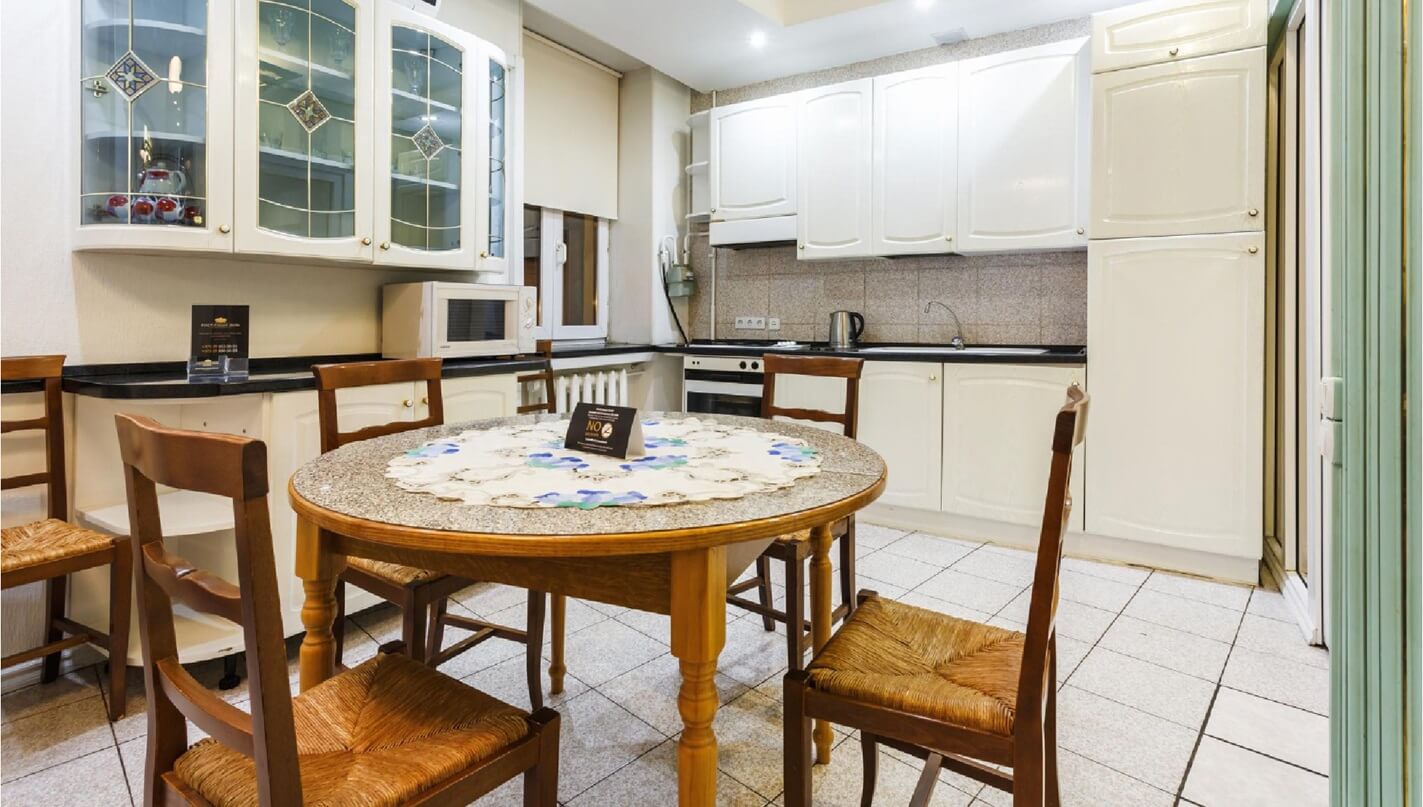
Italian kitchens often create a focal point around unique and bold furniture. The most common type of furniture for building around is the kitchen table. A wooden kitchen table surrounded with chairs that may mix and match in design, echoing the eclectic nature of Italian décor, help to anchor your kitchen.
In Italian culture, wine and beer are not just beverages, but an integral part of the culinary experience. As a result, the Italian kitchen often includes designated spaces for the storage and display of these libations. Wine racks crafted from wrought iron or wood may line the walls or even be built into an island or cabinetry, highlighting Italy’s rich viticulture. Similarly, for beer enthusiasts, built-in taps and chilled storage for artisanal brews bring the conviviality of an Italian tavern into the home. These elements not only add to the ambiance, allowing guests to appreciate your wine and beer selection, but they also keep these drinks within arm’s reach, facilitating the spontaneous hospitality that is synonymous with Italian culture—extended family gatherings and long, lively dinners that are a hallmark of Italian culture.
Lighting
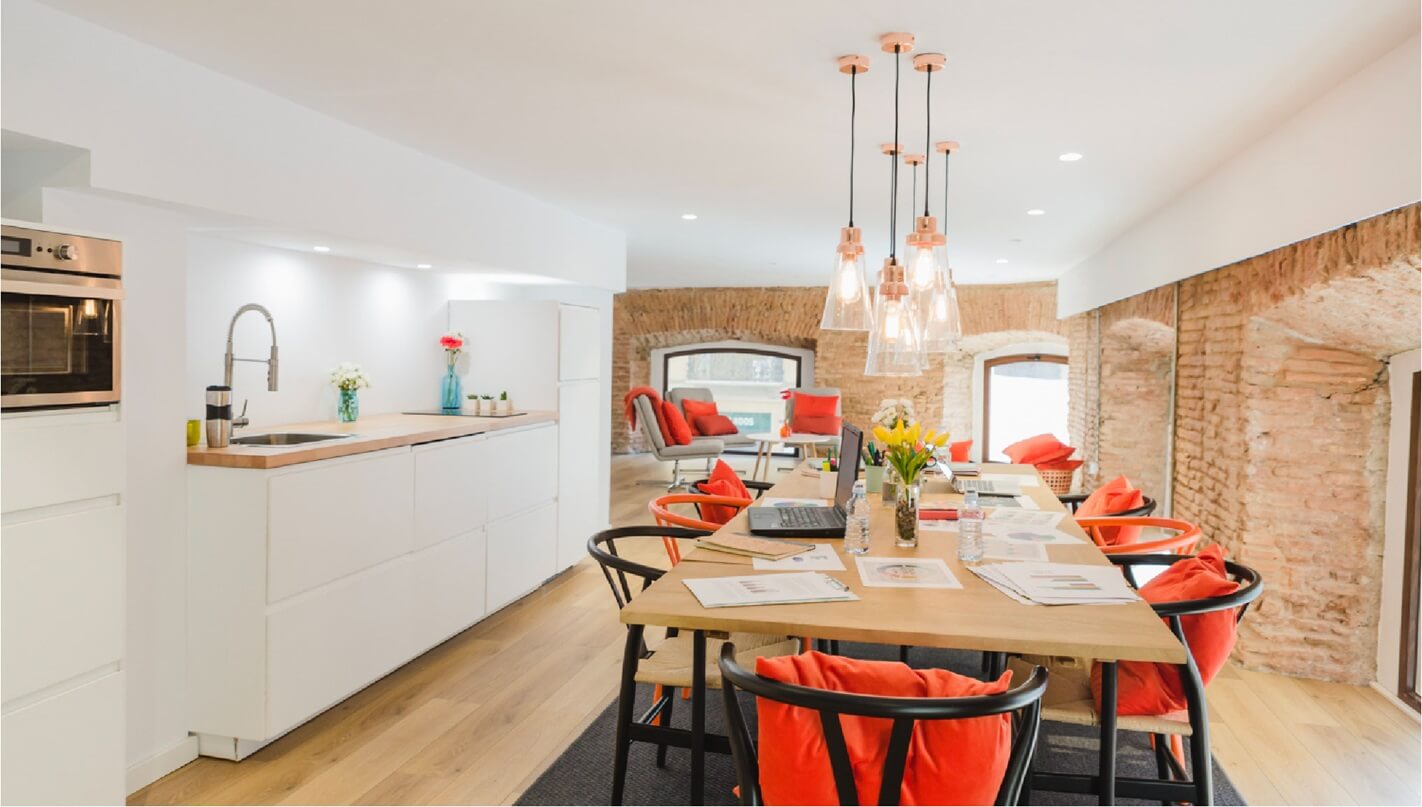
Lighting in an Italian kitchen is often labeled the soul of the kitchen, as a result, it should feel natural and warm. Iron light fixtures, rustic chandeliers, and wall sconces featuring intricate designs cast inviting glows that enhance the textures and colors of the kitchen. Task lighting ensures that modern convenience aligns with aesthetic warmth. Jump over to our guide on kitchen lighting to shine some more light on the subject.
Nature & Beauty
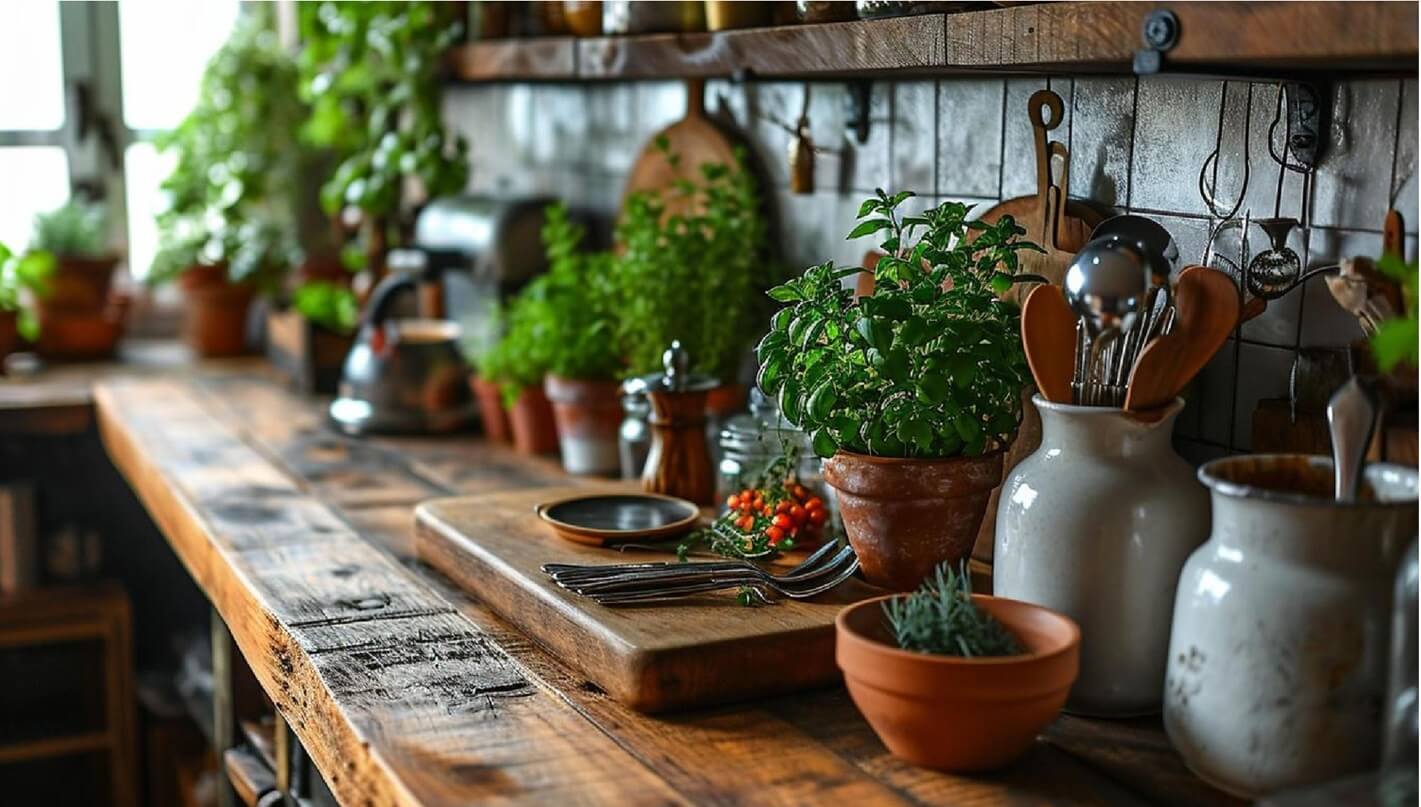
Incorporate elements from the Italian landscape with herb plants, olive trees in terracotta pots, or a small indoor lemon tree to bring greenery and life into the space. These touches not only serve as décor but can also be practical for daily cooking.
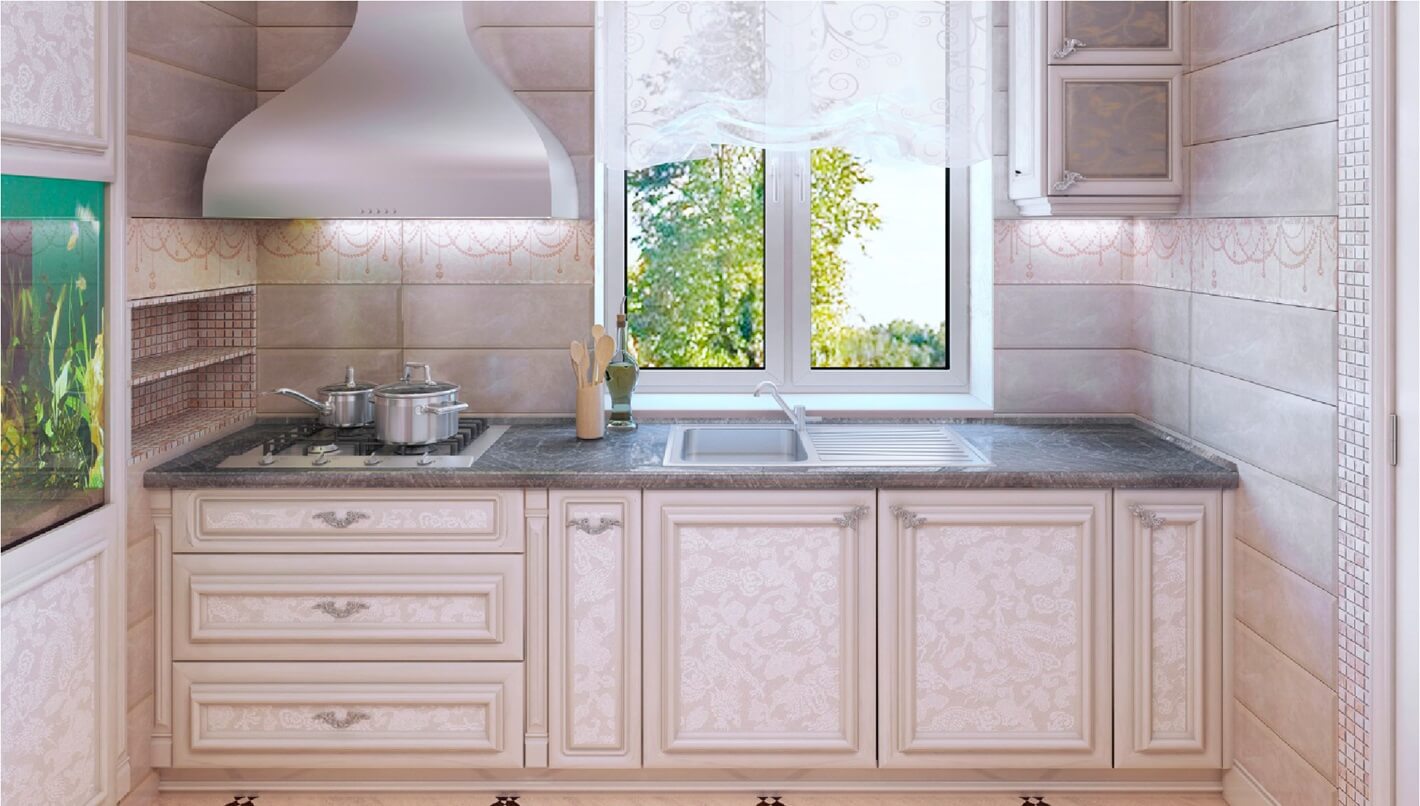
Maximize natural light with large windows, possibly accentuated with wrought iron grilles. When natural light is scarce, cleverly placed mirrors can help to bounce light around the room, ensuring the kitchen feels both bright and inviting at any time of day.
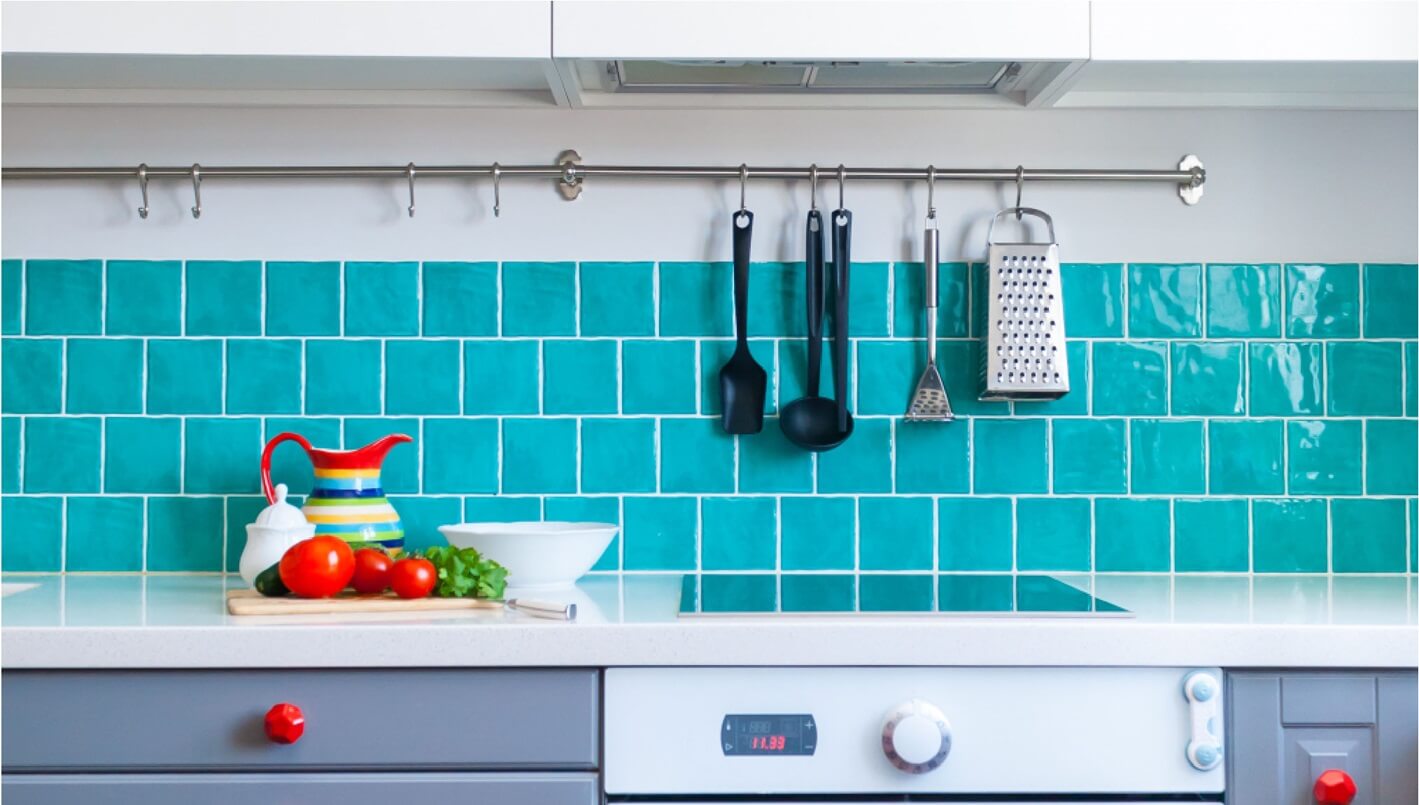
Given Italy’s extensive coastline, maritime elements find their way into the Italian kitchen décor. Introduce subtle hints of the sea with colors and textures, such as azure backsplashes or sand-hued linens, reflecting Italy’s beautiful seaside.
Personal Narratives
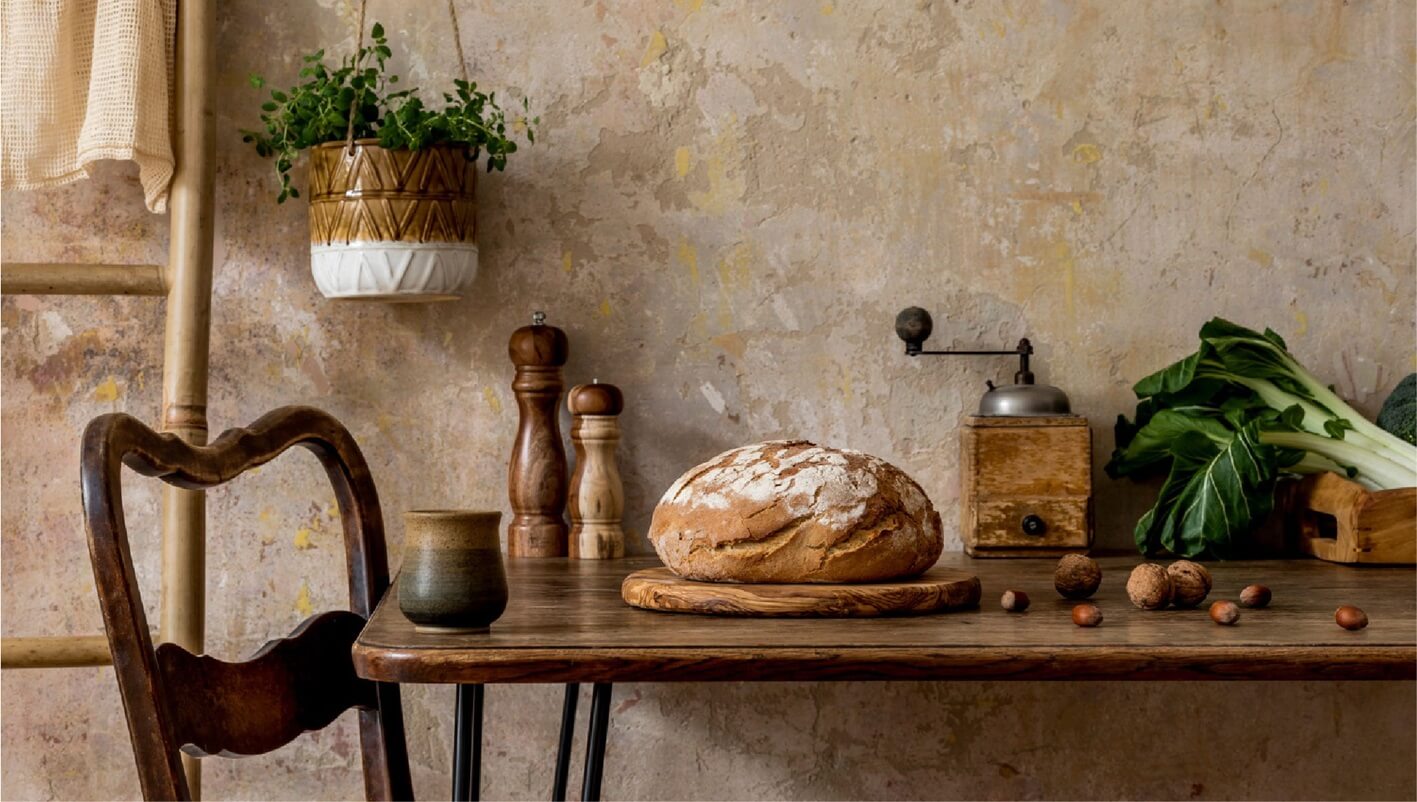
Italian kitchens often feature personal touches like wrought iron pot racks, antique espresso makers, or a cherished collection of wine corks displayed in a clear vase. Hang framed family recipes in the native tongue or black-and-white photos of Italian landmarks to personalize your space. Vintage utensils or copper pieces can act as functional decorations that narrate the rich history of Italian culinary traditions.
FAQs
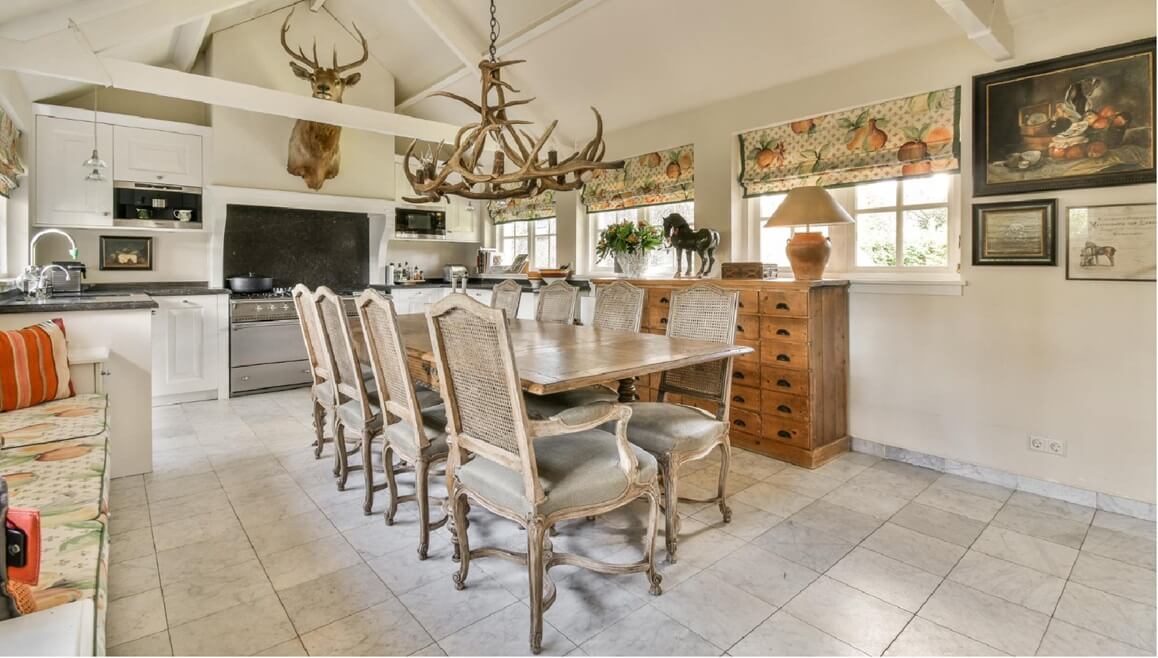
What are the hallmarks of Italian kitchen design?
Last updated on July 14th, 2024 at 07:22 am
Italian kitchens are renowned for their warm, sociable atmosphere, rustic yet elegant materials, and a seamless blend of traditional elements with modern kitchen conveniences.
How do I infuse my kitchen with Italian style?
Last updated on July 14th, 2024 at 07:22 am
To infuse your kitchen with Italian style, focus on using natural materials, such as wood and stone, and integrate Italian-themed decor items like ceramics and wrought iron accents. Family heirlooms and antique pieces also add an authentic touch.
What kind of lighting should an Italian kitchen have?
Last updated on July 14th, 2024 at 07:22 am
The lighting should be warm and welcoming, with a preference for wrought iron fixtures or rustic pendant lamps. Ample natural lighting is also integral to the Italian kitchen design, so consider ways to increase the influx of sunlight.
Thank you for taking the time to review this design inspiration guide. For more insight, check out this YouTube video showcasing a few dozen Italian style kitchens – see how many elements and interior design styles you can identify from my guide.
If you have any questions or would like to discuss designing your own custom Italian style kitchen, contact me directly, Jeff Hunt, owner of Hunt’s Kitchen & Design. I’d be happy to discuss crafting your personalized Italian kitchen sanctuary.



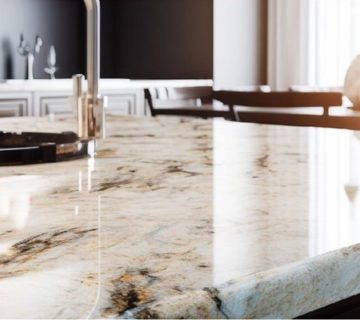

No comment